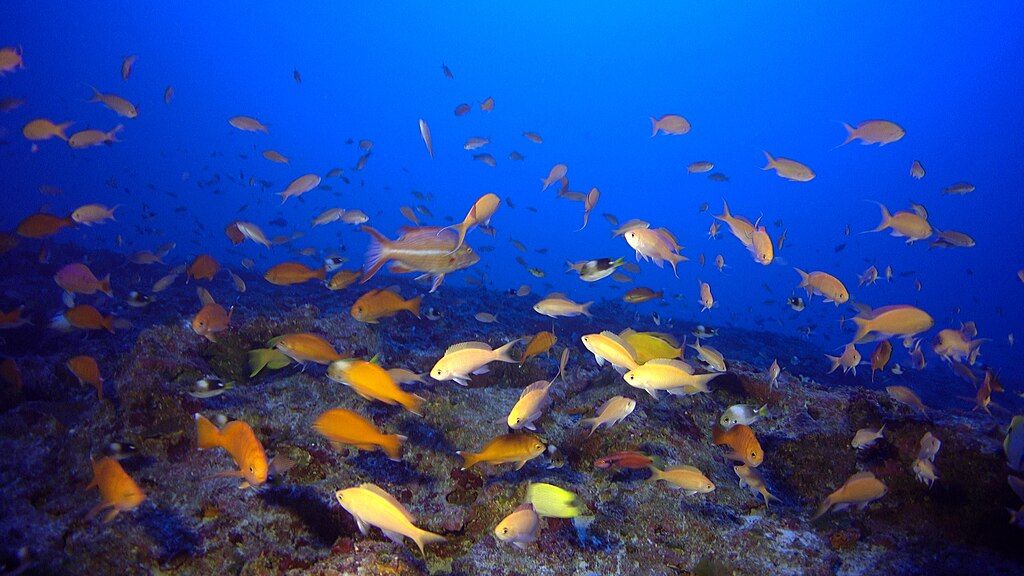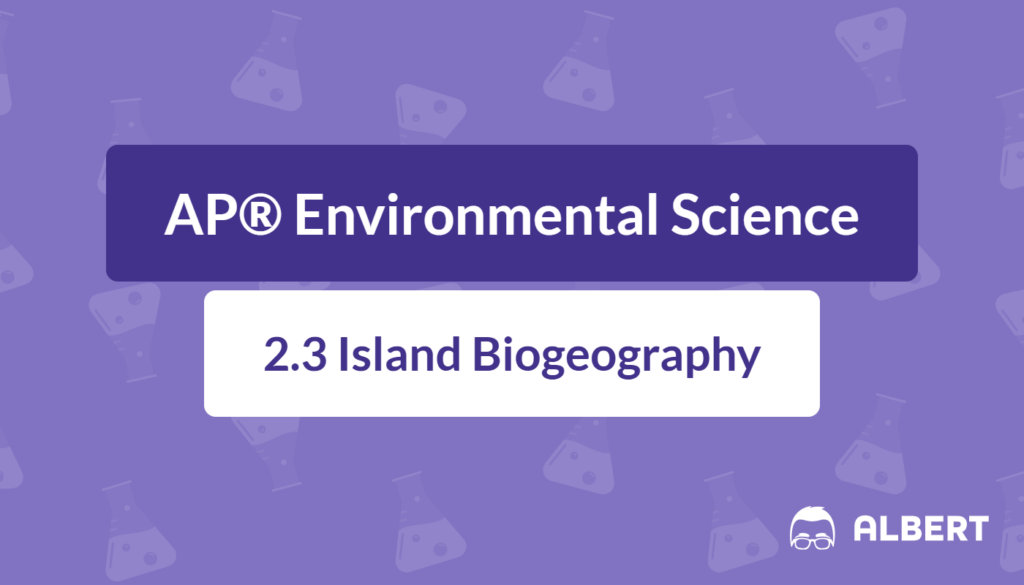What We Review
Island Biogeography: Understanding Life on Remote Landforms
Introduction
Island biogeography focuses on how organisms interact and distribute themselves on islands of various sizes and distances from the mainland. These insights matter because islands often reveal unique ecological relationships and community structures. In AP® Environmental Science, island biogeography helps explain patterns of adaptation, species diversity, and the critical role that isolation plays in evolution.
Nevertheless, many islands feature rare or specialized species that exist in fragile ecosystems. Because they are relatively isolated, islands can be colonized by a few individuals who arrive through natural dispersal events such as drifting on debris or flying over open water. As a result, island ecosystems frequently serve as living laboratories for studying how species evolve under limited resource availability. Therefore, examining island biogeography can offer a clearer picture of biodiversity, adaptation, and the long-term impacts of environmental pressures.
What Is Island Biogeography?
Island biogeography explores the distribution of organisms found on isolated areas of land, including landmasses surrounded by water and habitat “islands” like mountain peaks or isolated forests. The theory behind island biogeography examines factors such as island size and distance from the mainland to understand species immigration and extinction rates. A larger island typically has more resources, so it can support a greater number of species; a more remote island, however, often experiences fewer arrivals and has a higher chance of species extinctions over time.
It is also critical to appreciate the unique ecological relationships among organisms on islands. For instance, certain amphibians might not survive on isolated landmasses if the journey from neighboring territories is too lengthy. Additionally, birds that do arrive on remote islands may develop unusual adaptations, including specialized feeding behaviors, due to the limited competition and smaller number of predators.
Example: The Galápagos Islands
The Galápagos Islands, located in the Pacific Ocean off the coast of Ecuador, house numerous unusual species found nowhere else on Earth. Large tortoises, flightless cormorants, and marine iguanas all showcase dramatic adaptations for life on isolated islands. Observations of these species reveal how island-size differences affect population sizes. They also highlight how distance from the mainland can limit opportunities for immigration by other species.
- Colonization: Ancestors of modern Galápagos species arrived from mainland South America.
- Isolation: With limited competition, organisms evolved traits suited to the conditions on each island.
- Speciation: Over many generations, species such as marine iguanas developed specialized adaptations (e.g., swimming habits) that helped them survive in unique niches.
This example demonstrates how island biogeography principles can explain high levels of endemism (species found only on one specific geographic location).

Evolution and Island Biogeography
Islands have long been regarded as evolutionary hotspots. Their isolation creates conditions where genetic drift, natural selection, and mutation can shape species in novel ways. Because fewer species typically contend for available resources, organisms often evolve specialized traits to help them obtain food or avoid predators. Specialists may thrive on islands but can also become vulnerable to changes. By contrast, generalists can adjust to diverse environments and often succeed when sudden disruptions occur.
Furthermore, islands frequently become prime locations for researchers to investigate steps of evolution. By examining fossils and current populations, scientists observe how isolated gene pools adapt to local conditions. This process can lead to traits that appear strikingly different from the ancestral forms on the mainland.
Example: Darwin’s Finches
Charles Darwin’s famous finches on the Galápagos Islands illustrate how island biogeography drives evolution. These small birds exhibit diverse beak shapes corresponding to distinct feeding habits. Several key steps explain this divergence:
- Initial Arrival: A few finches from the South American mainland reached the Galápagos.
- Isolation: These founder birds bred in small populations on separate islands.
- Variation: Beak sizes and shapes varied due to genetic factors.
- Natural Selection: Birds with beaks best suited to island food sources (e.g., seeds, insects, or nectar) survived at higher rates.
- Divergence: Over many generations, each island’s finch population evolved specialized beak traits, resulting in multiple finch species adapted to different niches.
This process highlights how limited resources and isolation can drive speciation. Therefore, Darwin’s finches underscore the crucial interactions between scarcity, local conditions, and evolutionary change.
Limited Resources and Their Impacts
Island environments often feature finite space, water, or food supplies. Consequently, species that occupy these habitats must adapt to avoid resource depletion. Larger animals might not survive on smaller islands if the available vegetation is insufficient for their needs. On the other hand, smaller species capable of using resources efficiently may flourish.
Additionally, limited resources strongly influence community structures. Some species form mutualistic partnerships, such as certain island birds pollinating island flowers in exchange for nectar. Others reduce competition by exploiting different parts of the same resource, which is known as resource partitioning. Eventually, highly specialized species may be at risk if a new species—especially an invasive generalist—arrives and competes for the same food or nesting sites.
Example: Limited Food Supply on Small Islands
When food sources are meager, island species often adopt unique behaviors to optimize survival:
- Herbivores might become smaller to require fewer calories.
- Carnivores or omnivores could develop specialized hunting techniques to exploit abundant prey.
- Plants may produce seeds or fruit less frequently, since pollinators and water are scarce.
By focusing on these adaptive pathways, it becomes clear that the struggle for limited resources can lead to fascinating examples of specialization. Each adaptation within these step-by-step changes helps a species persist under naturally constrained conditions.
Invasive Species and Their Effects
An invasive species is a non-native organism introduced to a habitat where it often outcompetes native species. In island ecosystems, such introductions can be devastating. Because islands are home to species that sometimes lack defense mechanisms against new predators, invasive species can rapidly expand their populations and change community structures. Limited resources exacerbate the problem. Many native species on islands are specialists, which makes them especially vulnerable to competition from generalist invaders.
Furthermore, invasive species can arrive through human activities such as shipping, tourism, or accidental transport of goods. Once established, they can consume resources at unsustainable levels, leading to a drop in native species numbers. Therefore, managing invasions on islands becomes a priority for conservationists.
Example: The Introduction of Rats on Islands
Rats have been accidentally transported to islands across the world, creating significant ecological disruptions. These steps outline how their arrival affects local ecosystems:
- Arrival: Rats are sometimes stowaways on ships or passenger boats.
- Rapid Population Growth: On islands with few natural predators, rats reproduce quickly.
- Competition: Rats devour seeds, eggs, and invertebrates, reducing food availability for native birds and reptiles.
- Decline of Native Species: Ground-nesting birds, in particular, lose eggs to rat predation. Over time, certain bird populations plummet.
- Community Shift: As native species decline, rats dominate resources and alter the original ecosystem structure.
In this manner, an invasive species can transform an island’s balance in just a few generations.
The Importance of Conservation in Island Biogeography
Conservation efforts on islands often concentrate on preserving native species and preventing further invasions. Protected areas, such as national parks or nature reserves, help manage human activities that could introduce harmful organisms. These areas also frequently regulate tourism, monitor wildlife populations, and implement policies for eradicating invasive species.
Moreover, conservation planning involves assessing unique island features and ensuring that sufficient resources remain to sustain native species. In some cases, relocating vulnerable organisms to predator-free islands constitutes a viable strategy. For instance, certain bird species on smaller islands may be moved to larger islands with better food supplies. Additionally, strict biosecurity measures at ports and airports can reduce the probability of new invasive organisms arriving.
Therefore, preserving island ecosystems contributes to global biodiversity and the safeguarding of specialized traits found in no other habitats. If invasive organisms are kept in check, specialists have a better chance of survival. Consequently, future generations of students can continue learning about how evolutionary processes unfold in these remarkable environments.
Conclusion
Island biogeography demonstrates nature’s remarkable creativity and the powerful influence of geological isolation on species development. The study of remote landforms reveals how limited resources, specialist species, and invasive organisms interact to shape ecosystems. Islands illustrate evolution at work, spotlighting both adaptation and vulnerability.
Examining the Galápagos Islands or Darwin’s finches shows how a single group of animals can diverge into multiple species, each adapted to distinct environmental conditions. Meanwhile, small islands with scant resources present challenges that can encourage unique evolutionary pathways. However, when invasive species arrive, they often disrupt delicate ecological balances by competing with native species. Conservation strategies seek to maintain the biodiversity of these ecosystems, emphasizing habitat protection measures and invasive species control.
Ultimately, understanding island biogeography enriches knowledge of how species adapt in isolated settings. It also highlights the significance of safeguarding specialized organisms that have evolved under these distinctive circumstances.
Key Vocabulary
- Island Biogeography: The study of how species and ecosystems are distributed on islands and how isolation shapes ecological relationships.
- Specialists: Organisms with narrow environmental or dietary requirements, making them more vulnerable to environmental changes or invasive species.
- Generalists: Organisms that can survive in various environments and consume diverse food sources, conferring an advantage in changing habitats.
- Invasive Species: Non‑native organisms that outcompete local species for resources or habitat, leading to declining native populations.
- Endemism: The condition of being uniquely found in a specific geographic area, particularly common on isolated islands.
- Resource Partitioning: The division of limited resources among species to reduce competition and increase coexistence.
Sharpen Your Skills for AP® Environmental Science
Are you preparing for the AP® Environmental Science test? We’ve got you covered! Try our review articles designed to help you confidently tackle real-world AP® Environmental Science problems. You’ll find everything you need to succeed, from quick tips to detailed strategies. Start exploring now!
- AP® Environmental Science: 1.10 Review
- AP® Environmental Science: 1.11 Review
- AP® Environmental Science: 2.1 Review
- AP® Environmental Science: 2.2 Review
Need help preparing for your AP® Environmental Science exam?
Albert has hundreds of AP® Environmental Science practice questions, free response, and full-length practice tests to try out.








